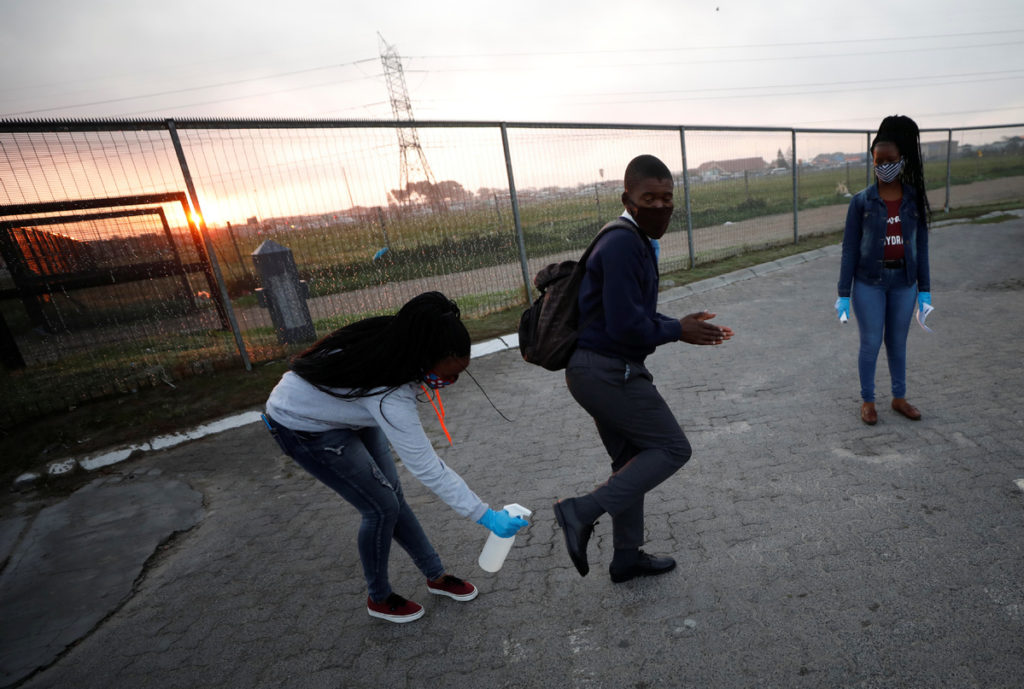With the ongoing push to reopen schools after closing for almost six months, many African countries are in dilemma on when to reopen, as most of the countries are yet to flatten the curve of coronavirus infections.
South Africa, which started gradual reopening of schools on June 8, was compelled to close them again in July following the spiking of coronavirus infections.
The schools were closed for four weeks from July 27 to Aug 24, apart from grade 12 learners who went back to school on Aug 3.
Professor George Magoha, the Kenyan cabinet secretary for education, has maintained that the ministry will not bow to pressure to reopen schools until the country flattens its coronavirus infection curve.
Higher learning institutions have been offering online learning services, exams and graduation, while no learning has been offered for public primary and secondary schools.
During a tour of Meru National Polytechnic on Friday to assess the preparedness of the institution for reopening, Magoha said a phased school reopening could kick off in November if learning institutions fully comply with coronavirus preventive measures.
The measures include setting up sanitizer booths, adequate water points for handwashing, observing social distancing, especially in classes and dining halls, and wearing face masks, as well as having thermometers and first aid kits.
Magoha said he was pleased with many institutions across the country for their efforts to prepare for reopening.
Initially, the cabinet secretary had announced normal learning in the country would resume in January but the decision might be revised due to the reduced new coronavirus infections. On Sunday, the country reported a record low of 83 new coronavirus infections as it heightens measures to flatten the infection curve and fully reopen the economy.
Zimbabwe, on the other hand, has announced plans to reopen primary and secondary schools on Sept 14 for students who are taking Cambridge exams and on Sept 28 for those taking local exams.
The government assured the public that it’s working closely with other stakeholders to guarantee the safety of staff and pupils during the examination period.
On Thursday, the government released mandatory standard operating procedures to prevent the spread of coronavirus as per World Health Organization guidelines and the country’s Ministry of Health.
The measures include wearing masks, observing social distancing, sanitizing, temperature checks, a maximum of 35 students per classroom, no sharing desks, no visitors in schools apart from essential service providers, temporary isolation rooms and banning of sports, among others.
The Ministry of Primary and Secondary Education successfully conducted June national examinations for Forms four and six from June 30 to July 23.
In Nigeria, the government is set to reopen colleges on Sept 14 and primary and secondary schools on Sept 21 in the commercial hub of Lagos, despite the city being the epicenter of coronavirus.
The announcement follows a steady decline in the number of new infections in the country.
As of Monday, Nigeria which is among the five most affected countries, had recorded 55,005 confirmed coronavirus cases and 1,057 deaths.
The Academic Staff Union of Universities is concerned that the government is reopening schools when proper coronavirus precautionary guidelines are not in place.
In a statement on Sunday, the University of Ibadan chapter of the Academic Staff Union of Universities said tertiary institutions are overcrowded and not social-distance compliant.
With several sub-Saharan Africa countries set to resume classwork in September, which is the start of the academic year in some countries, the WHO, the United Nations Children’s Fund and the International Federation of Red Cross have issued guidance on coronavirus prevention and control in schools.
The guidance includes recommendations for physical distancing measures, such as staggering the beginning and end of the school day, cancelling school events that create crowding, spacing desks when possible, providing handwashing facilities, wearing masks, discouraging unnecessary touching and ensuring that sick students and teachers stay at home.

